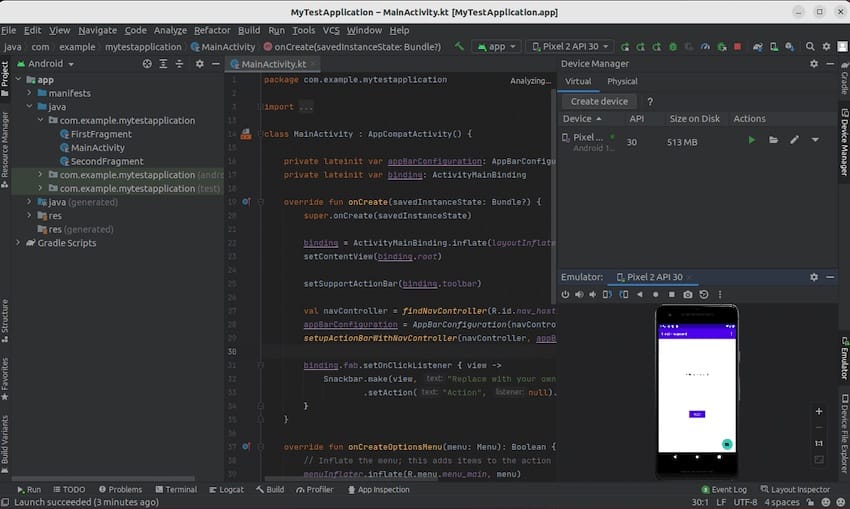How To Install Android Studio on Rocky Linux 9

In this tutorial, we will show you how to install Android Studio on Rocky Linux 9. For those of you who didn’t know, Android Studio is the official integrated development environment for Google’s Android operating system, built on JetBrains’ IntelliJ IDEA software and designed specifically for Android development. Android Studio is a feature-rich tool to develop mobile applications and user interfaces. It supports a variety of operating systems, including Linux, Windows, and macOS.
This article assumes you have at least basic knowledge of Linux, know how to use the shell, and most importantly, you host your site on your own VPS. The installation is quite simple and assumes you are running in the root account, if not you may need to add ‘sudo‘ to the commands to get root privileges. I will show you the step-by-step installation of the Android Studio on Rocky Linux. 9.
Prerequisites
- A server running one of the following operating systems: Rocky Linux 9.
- It’s recommended that you use a fresh OS install to prevent any potential issues.
- SSH access to the server (or just open Terminal if you’re on a desktop).
- A
non-root sudo useror access to theroot user. We recommend acting as anon-root sudo user, however, as you can harm your system if you’re not careful when acting as the root.
Install Android Studio on Rocky Linux 9
Step 1. The first step is to update your system to the latest version of the package list. To do so, run the following commands:
sudo dnf check-update sudo dnf install dnf-utils sudo dnf install zlib.i686 ncurses-libs.i686 bzip2-libs.i686
Step 2. Installing Android Studio on Rocky Linux 9.
- Install Android Studio from the official source.
By default, Android Studio is available on Rocky Linux 9 base repository. Now run the following command below to download the latest version of the android studio from the official page to your Rocky Linux system:
wget https://redirector.gvt1.com/edgedl/android/studio/ide-zips/2024.2.1.11/android-studio-2024.2.1.11-linux.tar.gz
Next, extract the downloaded file:
tar xvf android-studio-2024.2.1.11-linux.tar.gz
After you’ve extracted the tar file, now we navigate to the ~/android-studio/bin folder and run the installer that is studio.sh as shown below.
cd ~/android-studio/bin ./studio.sh
Follow the instructions and complete the installation.
- Install Android Studio using Snapcraft.
If the Snapd package manager is not already installed then you can install it by running the following command below:
sudo dnf install snapd
sudo snap install core
To install Android Studio, simply use the following command:
sudo snap install android-studio --classic
Step 3. Accessing Android Studio on Rocky Linux 9.
Once the installation is completed, you can run the Android Studio from your activities or AppManager by typing “Android Studio” or launch the application immediately using the following command below:
android-studio

Congratulations! You have successfully installed Android Studio. Thanks for using this tutorial for installing the Android Studio on your Rocky Linux 9 system. For additional help or useful information, we recommend you check the official Android Studio website.